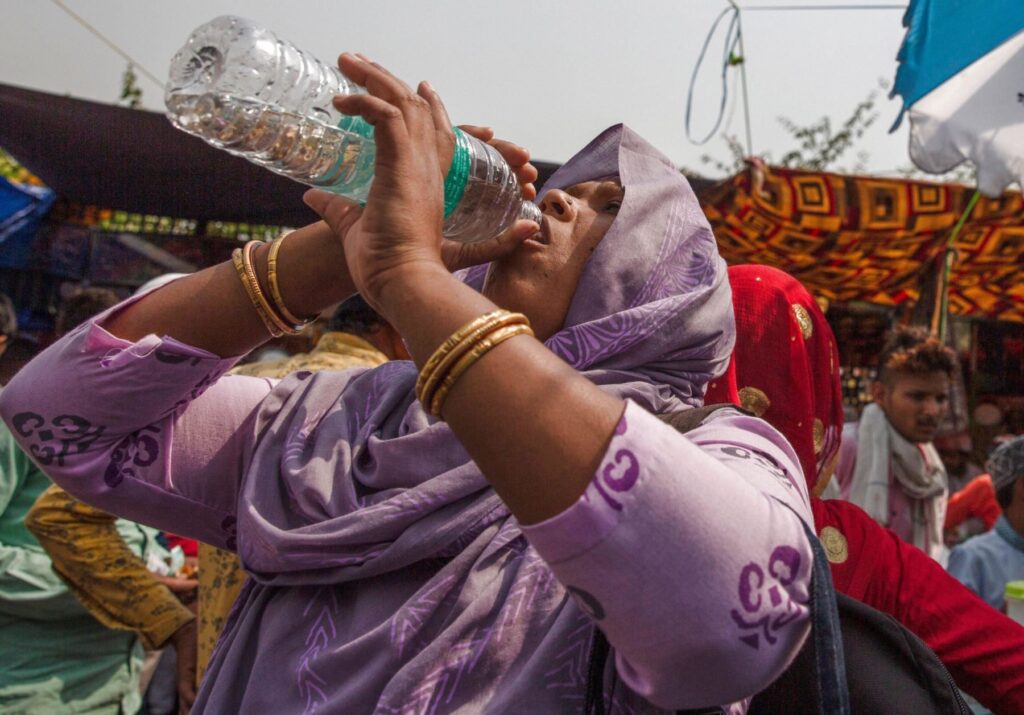Asia’s Extreme April Heat Worsened By Climate Change, Says Study
May 15, 2024 | Pratirodh Bureau
This April, Asia was hit by severe heat waves. Temperatures reached as high as 46 degrees Celsius in India (Image: Javed Dar/Alamy)
According to rapid attribution analysis by an international team of leading climate scientists from the World Weather Attribution group, extreme temperatures above 40 degrees Celsius that impacted billions of people across Asia in April were made hotter and more likely by human-caused climate change.
The study highlights how heatwaves intensified by climate change are making life much tougher for the 1.7 million displaced Palestinians in Gaza and for people living in poverty across Asia.
This April, Asia was hit by severe heat waves. Temperatures reached as high as 46 in India. In South and Southeast Asia, Vietnam, Myanmar and Laos broke records for their hottest April day and the Philippines experienced its hottest night ever. With Israel and Palestine experiencing temperatures above 40 degrees, the heat was also extreme in West Asia.
In April, there were atleast five heat-related deaths in India, three in Gaza and 28 in Bangladesh. Surges in heat deaths were also reported in Thailand and Philippines in 2024.
Since these are only preliminary figures and because heat-related deaths are grossly under-reported, there were likely hundreds or possibly thousands of other heat-related deaths in Asia during April.
The heat also led to water shortages, crop failure, loss of livestock, mass die-off of fish, widespread school closures and low voter turnout in Kerala.
Caused by burning coal, oil and gas, and other human activities like deforestation, climate change is making heatwaves more frequent, longer and hotter around the world.
In order to quantify the effect of human-caused warming on extreme temperatures across Asia, scientists analysed climate models and weather data using peer-reviewed methods to compare how these type of events have changed between today’s climate — with approximately 1.2 degrees of global warming, and the cooler, pre-industrial climate.
The study analysed historical weather data for a region of South Asia that includes India, Myanmar, Laos, Vietnam, Bangladesh, Cambodia and Thailand. However, the researchers did not carry out a full attribution analysis for this region as the World Weather Attribution had conducted similar studies in the years 2022 and 2023. Additionally, data from weather observations showed that the attribution results would not be significantly different.
Scientists found that in West Asia, April heatwaves with temperatures above 40 degrees are more frequent due to warming caused by human activities. With 1.2 degrees of warming, in today’s climate, similar heatwaves are expected to occur about once every 10 years.
Meanwhile, climate change made the heat 1.7 degrees hotter and about five times more likely. In future, extreme temperatures could become even more intense and frequent. If warming reaches 2 degrees — as it is expected to in the 2040s or 2050s unless emissions are rapidly halted — similar heatwaves will occur about once every five years and will become another degree hotter, according to the study.
The study was conducted by 13 researchers, including scientists from meteorological agencies in Britain, Malaysia, Sweden and the Netherlands.
“Climate change is bringing more days with potentially deadly temperatures to Asia every year. This result is unsurprising, but important for highlighting the dangers of extreme heat in Asia,” said Mariam Zachariah, Researcher at the Grantham Institute — Climate Change and the Environment, Imperial College London. Zachariah added, “Unless the world takes massive, unprecedented steps to reduce emissions and keep warming to 1.5 degrees Celsius, extreme heat will lead to even greater suffering in Asia.”
